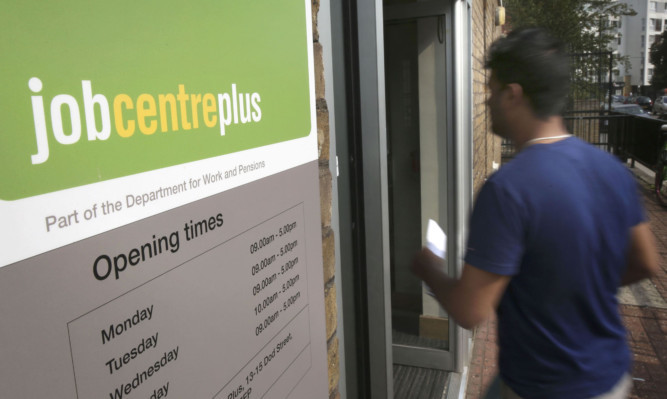Thousands more working age people in Scotland are economically inactive, with fewer people in work and an even bigger drop in those looking for work, official figures show.
The number of people aged 16 to 64 in employment fell by over 11,000 to 2.61 million in the three months to June compared with the previous quarter, according to the Office for National Statistics.
But the number of people registered as unemployed – those actively looking for work – fell by 13,000 to 155,000.
There were 24,000 more economically inactive people – such as the sick and disabled, those in early retirement, family carers and jobless students – rising to 731,000.
Figures for the full year show that employment in Scotland rose by 28,000, unemployment fell by 19,000 and economic inactivity fell by 6,000 since June 2014.
Average earnings fell slightly in the three months to June to £556 a week, but are 3.1% higher than June 2014 with Scotland the highest earning area of the UK outside London, the south east and east.
But the annual rise in men’s earnings (4.1%) to £614 a week outstripped the rise in women’s (1.1%) earnings to £474 a week, with men continuing to earn over a fifth more than women.
Scotland Office Minister Lord Andrew Dunlop said: “Today’s figures show unemployment falling and wages continuing to rise well above inflation.
“This shows we are working to ensure everyone benefits from a growing economy as we build a country based on security and opportunity.
“We will continue to help businesses create jobs and support those who want to work hard and get on. The introduction of our National Living Wage will ensure work pays for everyone across the country.”
Economically inactive people account for over a fifth of Scotland’s working age population (21.4%), with workers comprising less than three quarters (74.1%) and little more than one in 20 (5.6%) registered unemployed.
The proportion of working people in Scotland is higher than the UK average (73.4%), with the same unemployment rate and a lower rate of economic activity than the UK as a whole (22.1%).
